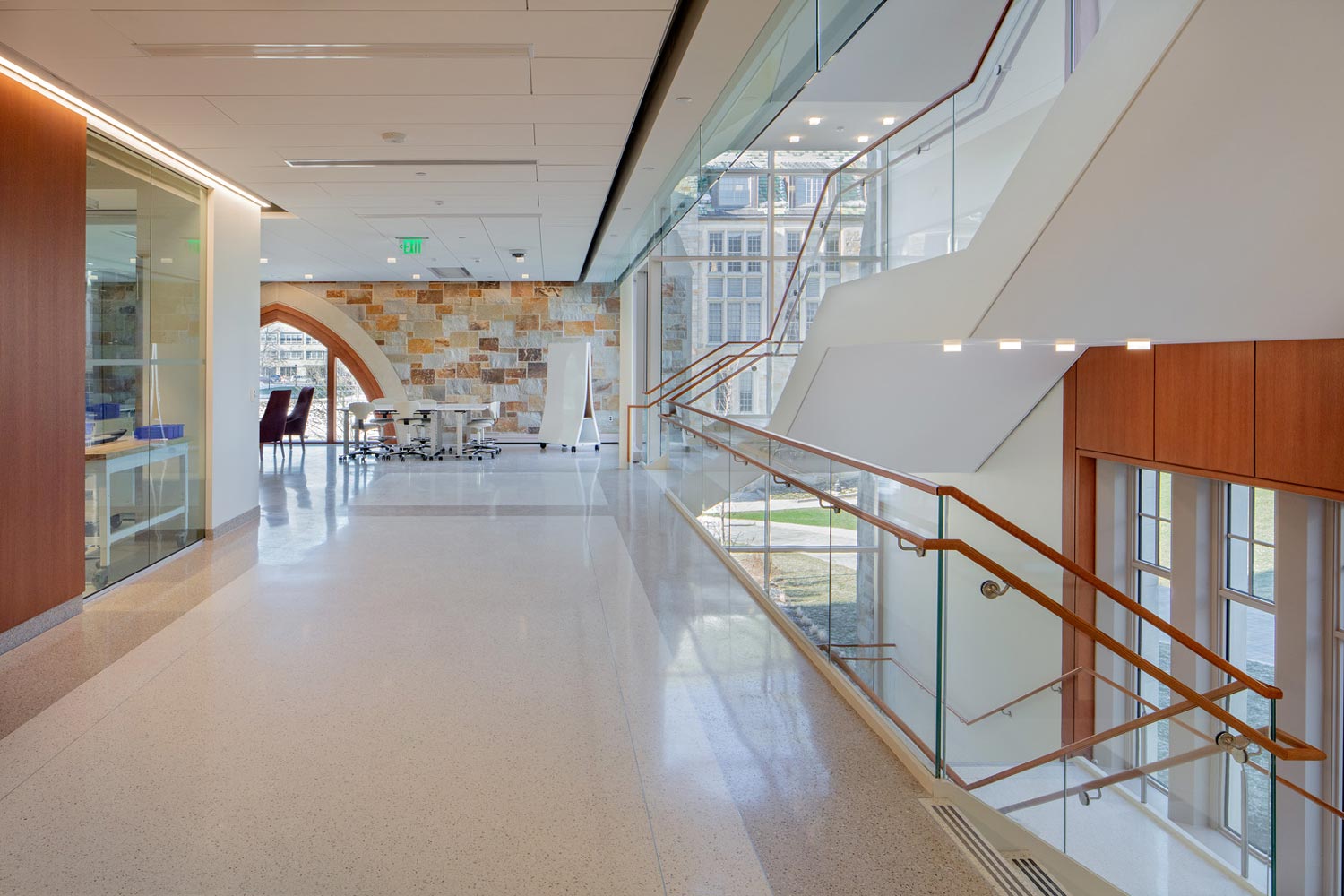
Scientific Exploration
Boston College recently opened 245 Beacon Street, a state-of-the-art science building that’s home to the Schiller Institute for Integrated Science and Society. Here’s a look at the beautiful facility.
When students returned to campus in January for the start of the spring semester, they were greeted by Boston College’s shimmering new science building, officially open for classes after two years of planning and construction. The 150,000-square-foot, $150 million facility features state-of-the-art teaching and research laboratories, makerspaces, versatile classroom setups, and public collaboration areas—all of it framed by endless stretches of glass and natural light to promote a climate of creativity and innovation. Known as 245 Beacon Street, the building houses the Schiller Institute for Integrated Science and Society; BC’s new Human-Centered Engineering department; the Shea Center for Entrepreneurship; and the Computer Science department. Connected to Higgins Hall, which is home to the Biology and Physics departments, and adjacent to the Eugene F. Merkert Chemistry Center, 245 Beacon represents the latest addition to what is now a 500,000-square-foot expanse of STEM-focused teaching and research at BC.
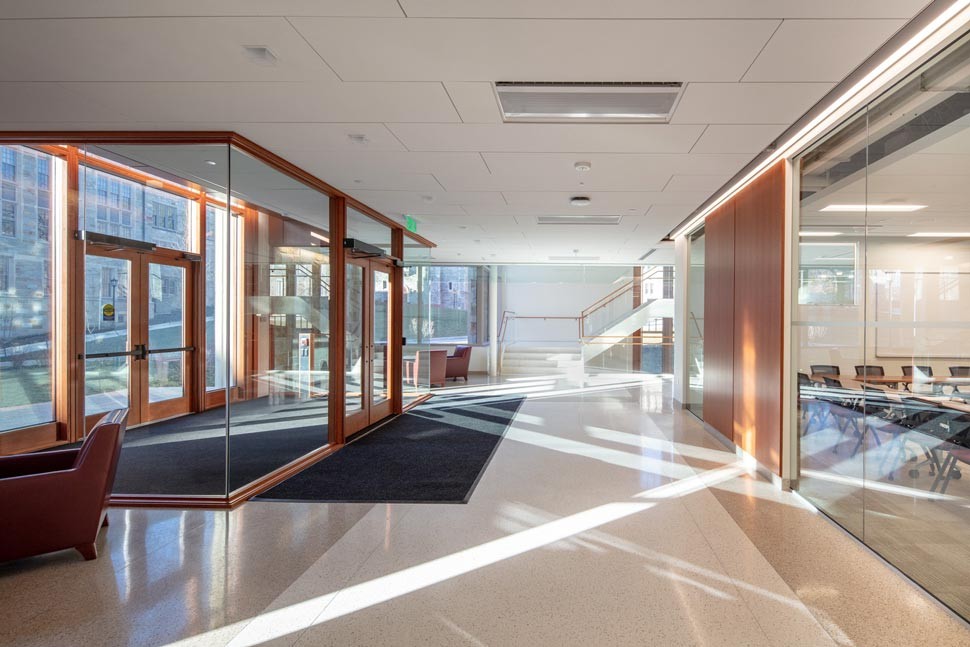
The extensive use of glass and natural light is evident throughout the building, including in its entryway.
“245 Beacon will quickly emerge as a hub for student and faculty engagement at the frontiers of science and technology. Its arrival on campus is cause for celebration.”
David Quigley, Provost and Dean of Faculties
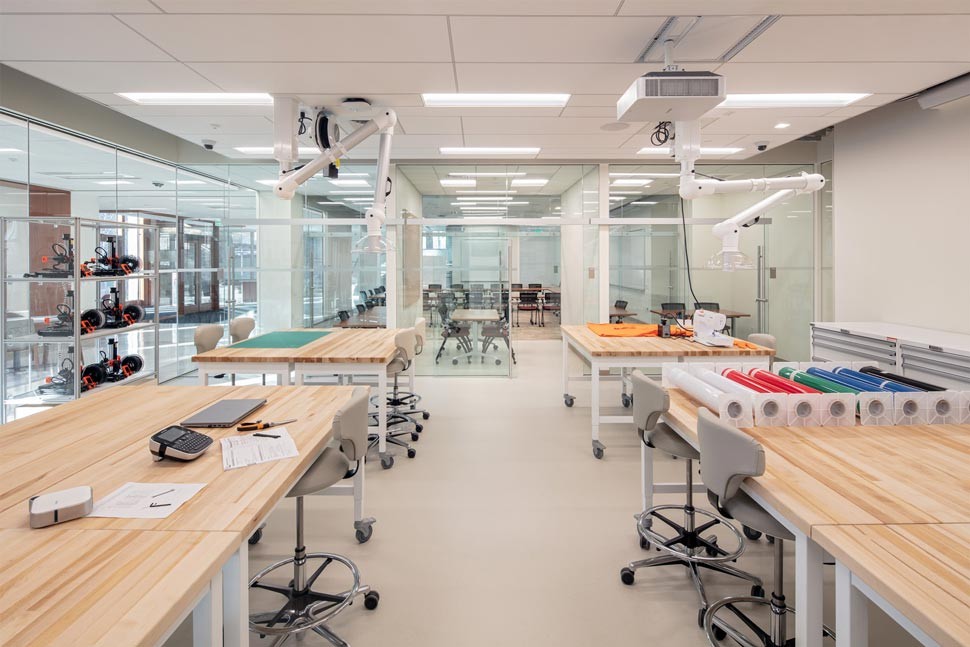
The facility includes more than 13,000 square feet of lab space.
“There is a genuine excitement that 245 Beacon will make an impact, both on campus and in the world. You can sense that when you walk in the building.”
Tom Chiles, Vice Provost for Research and Academic Planning
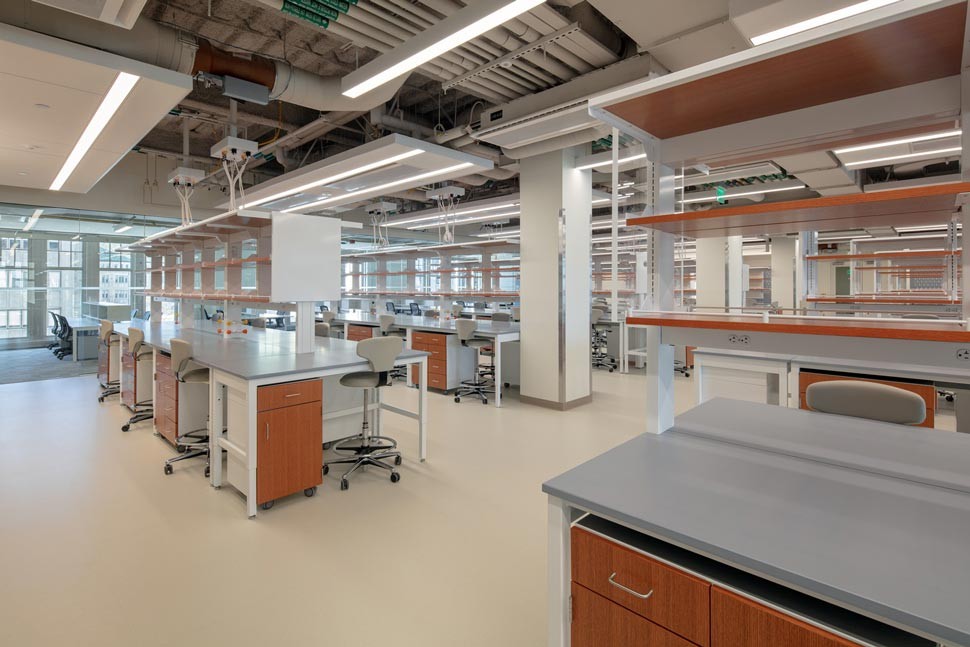
Much of the equipment in the labs is on wheels to maximize layout flexibility.
“Schiller Institute laboratories and convening spaces empower students and faculty to tackle the great societal problems of our times—starting with today’s focus on climate, renewable energy, and global public health.”
Laura Steinberg, Schiller Institute Executive Director
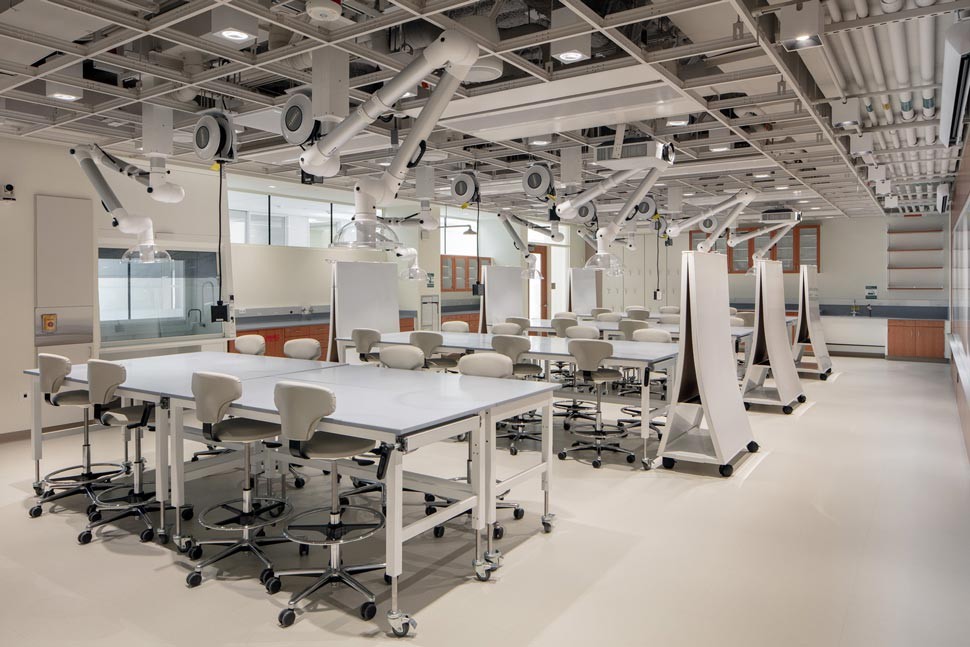
“The openness of the building helps entice collaborations, especially from different academic departments. The goal is to enable the development of solutions to the problems facing humanity.”
Glenn Gaudette, Engineering Department Chair
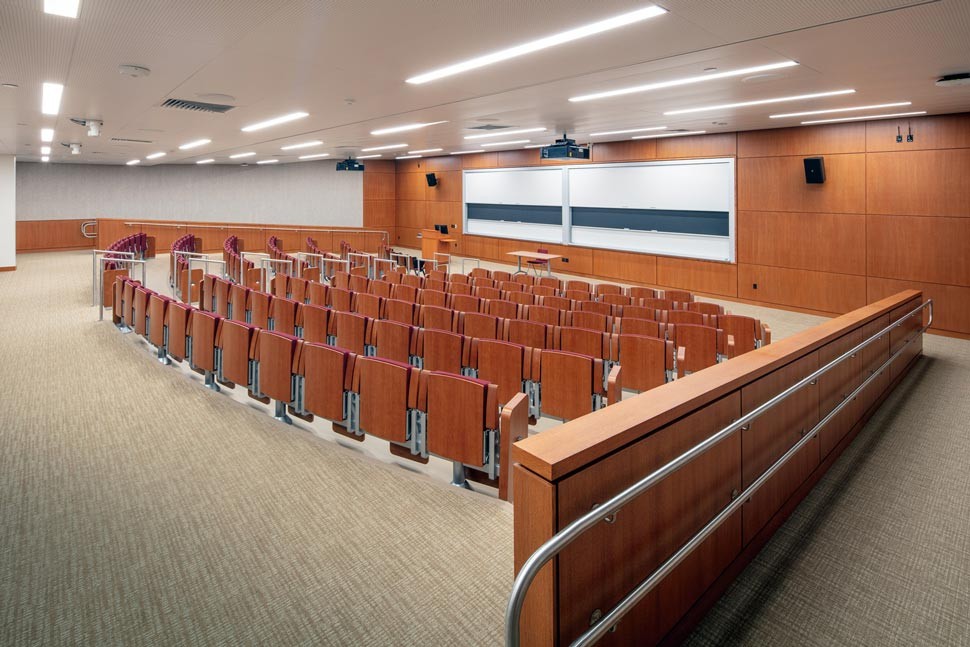
The 245 Beacon Street auditorium spans 1,600 square feet and includes 181 seats.
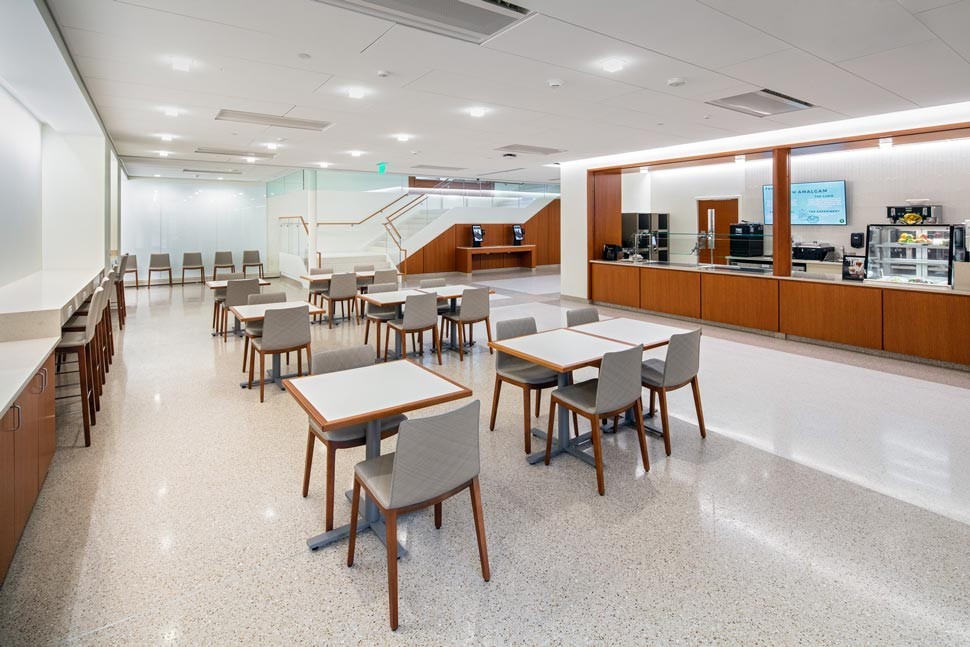
The building’s café can accommodate 140 transactions per hour at peak periods with its modern kiosk and mobile ordering capabilities.
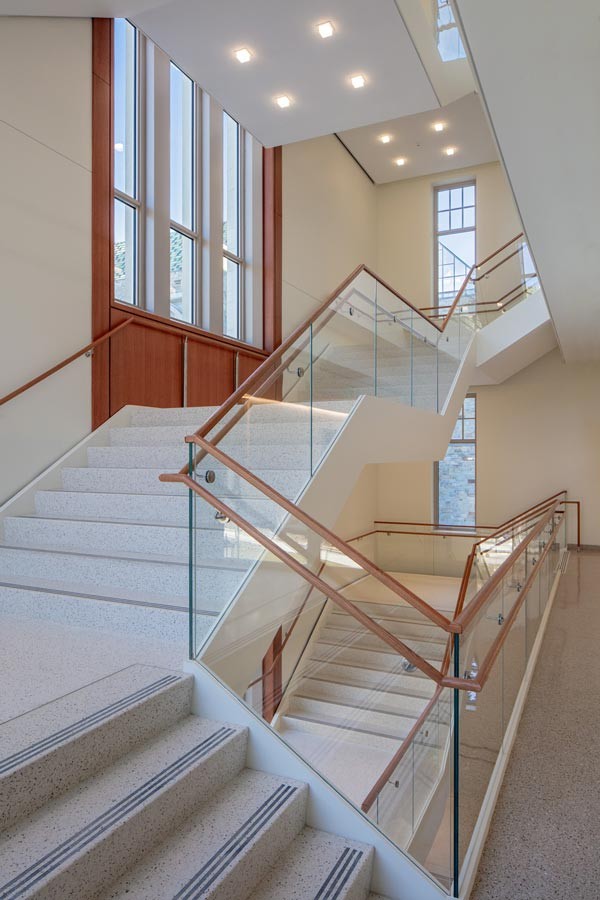
A numerical look at 245 Beacon Street
- 383 windows
- 18,000 square feet of interior glass
- 13,300 square feet of lab space
- 5,500 square feet of makerspace
- 14,000 square feet of collaborative space
- 9 classrooms
- 10 miles of duct work
- 31,000 square feet of granite
- 2 outdoor terraces with total seating for 39
- 22 offices for principal investigators
- 1,775 tons of steel
- 26,000 feet of roof tile


 print
print mail
mail